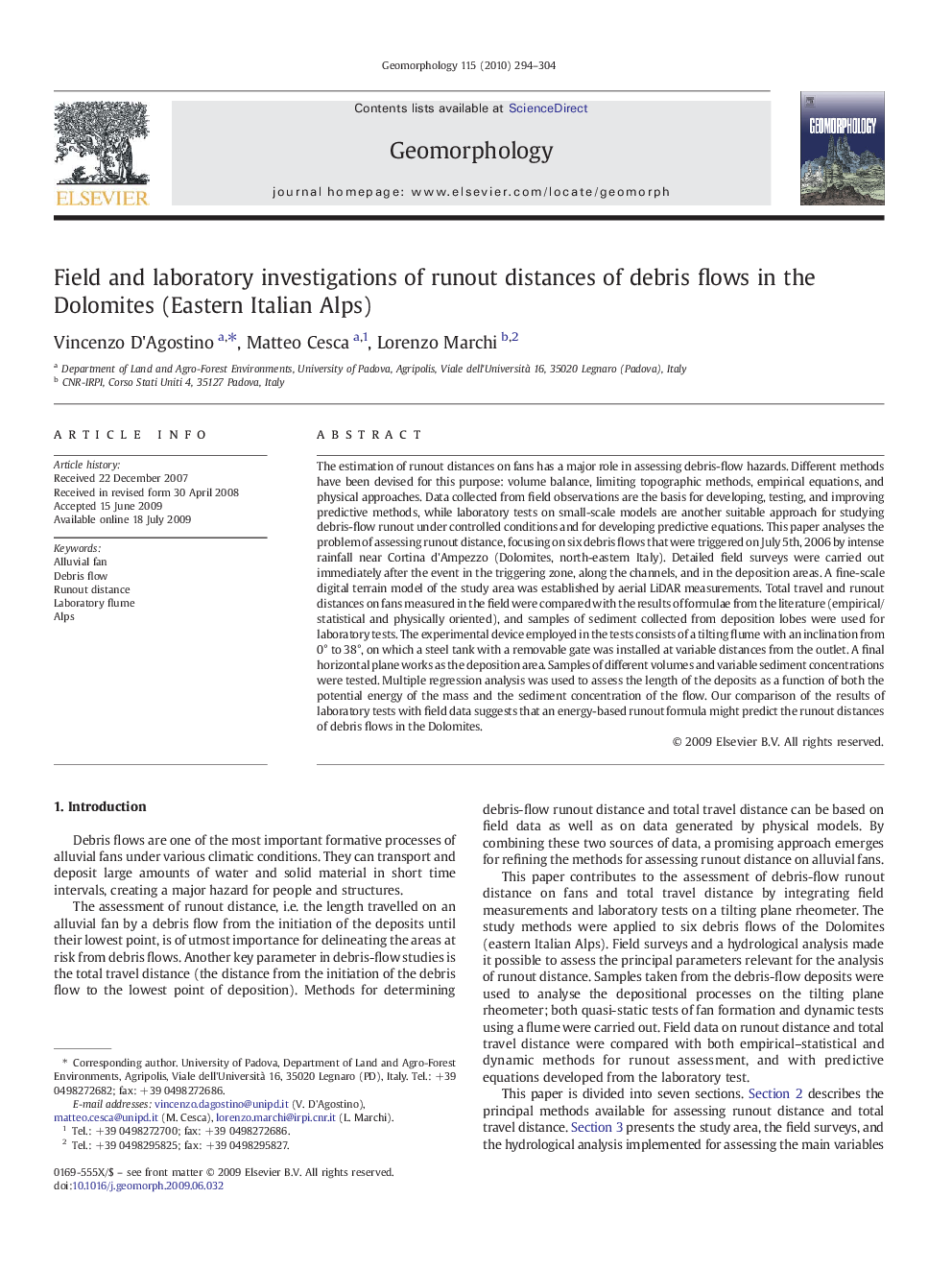| Article ID | Journal | Published Year | Pages | File Type |
|---|---|---|---|---|
| 4686155 | Geomorphology | 2010 | 11 Pages |
The estimation of runout distances on fans has a major role in assessing debris-flow hazards. Different methods have been devised for this purpose: volume balance, limiting topographic methods, empirical equations, and physical approaches. Data collected from field observations are the basis for developing, testing, and improving predictive methods, while laboratory tests on small-scale models are another suitable approach for studying debris-flow runout under controlled conditions and for developing predictive equations. This paper analyses the problem of assessing runout distance, focusing on six debris flows that were triggered on July 5th, 2006 by intense rainfall near Cortina d'Ampezzo (Dolomites, north-eastern Italy). Detailed field surveys were carried out immediately after the event in the triggering zone, along the channels, and in the deposition areas. A fine-scale digital terrain model of the study area was established by aerial LiDAR measurements. Total travel and runout distances on fans measured in the field were compared with the results of formulae from the literature (empirical/statistical and physically oriented), and samples of sediment collected from deposition lobes were used for laboratory tests. The experimental device employed in the tests consists of a tilting flume with an inclination from 0° to 38°, on which a steel tank with a removable gate was installed at variable distances from the outlet. A final horizontal plane works as the deposition area. Samples of different volumes and variable sediment concentrations were tested. Multiple regression analysis was used to assess the length of the deposits as a function of both the potential energy of the mass and the sediment concentration of the flow. Our comparison of the results of laboratory tests with field data suggests that an energy-based runout formula might predict the runout distances of debris flows in the Dolomites.
